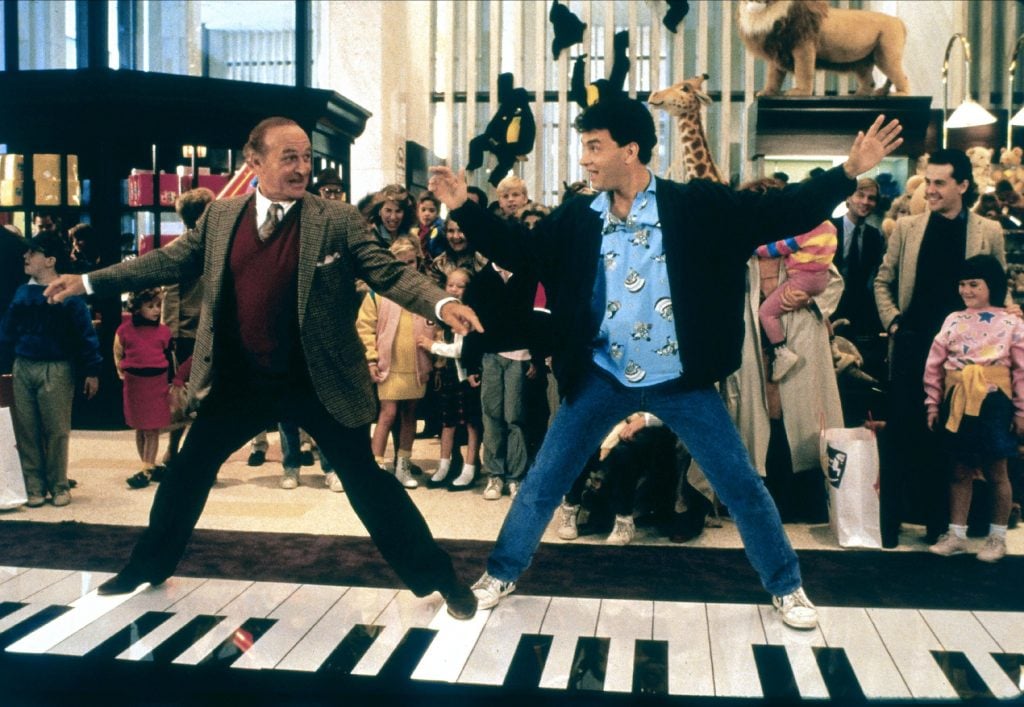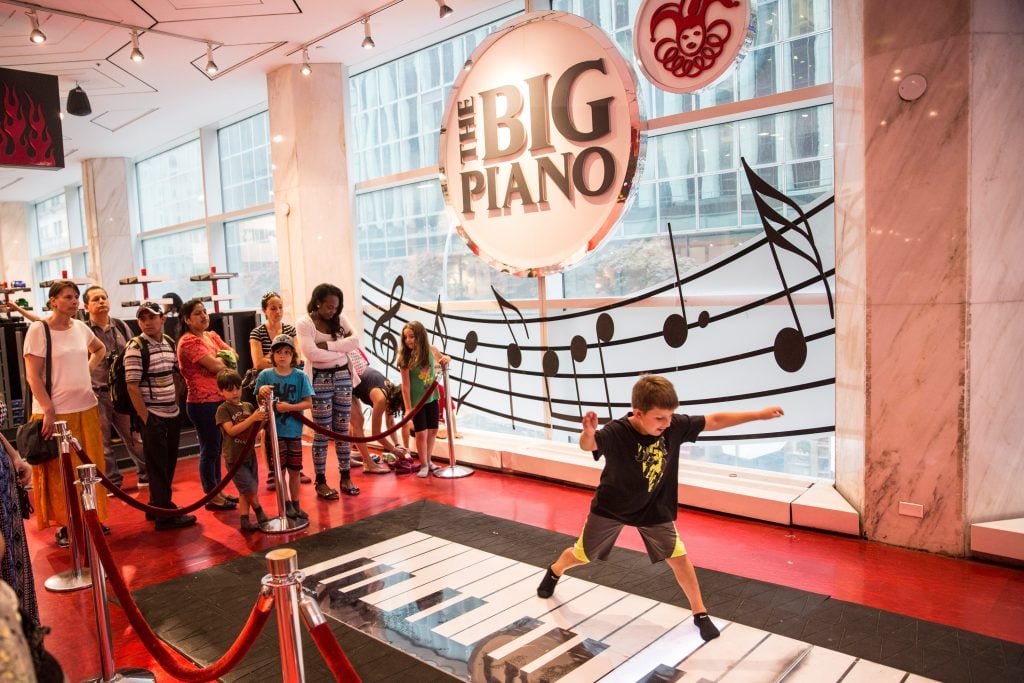Pop Culture
As Seen on ‘Big’: An Interactive Piano That Catapulted Its Inventor to Fame
The massive keyboard at the heart of the film came to define its inventor, Remo Saraceni.

The massive keyboard at the heart of the film came to define its inventor, Remo Saraceni.

Min Chen

If Big isn’t notable for its super weird premise—in which a teenage boy gets trapped in a man’s body (it’s a long story)—the 1988 hit movie is best remembered for the massive interactive piano that anchors its most buoyant scene.
Early in the film, Josh (Tom Hanks) tours New York toy store FAO Schwarz alongside its owner and his boss Mr. MacMillan (Robert Loggia), only to accidentally tread on a large piano key. It sounds a note. Discovering the rest of the keyboard, Josh, more child than childlike, proceeds to bounce across the keys to play a rendition of “Heart and Soul.” MacMillan joins him. Together, they perform “Chopsticks” as a crowd of children gathers to watch the grown men dance across the piano. At the end of their impromptu recital, MacMillan offers Josh a promotion.
According to Hanks, he and Loggia undertook grueling weeks-long preparations for the scene. “We rehearsed until we dropped,” he said in 1989. “It was like jumping rope for three and a half hours every time we did the scene. It was really hard work.”
Also hard work? The decade-plus that inventor Remo Saraceni put into creating and constructing the installation known as the Walking Piano or Big Piano. The work would come to define Saraceni in life and death: following his passing this June, obituaries have invariably acknowledged his high-profile contribution to the Hanks vehicle.
An Italian transplant, Saraceni was a sculptor, designer, and engineer who brimmed with inventions. Throughout the 1960s and ’70s in Philadelphia, he hatched gadgets such as sound-activated lamps, clocks that talked back, and a dome that responded to current events, among other kinetic sculptures. His was a pragmatic yet arch approach to electronics: “Technology should live and breathe with you. It should respond to you, not you to it.”
In 1970, at Philadelphia’s Civic Center, he unveiled his Musical Daisy, a soft sculpture with eight large petals that played a sound when a visitor sat on them. “From there the concept grew. It took shape with an intermediate stop at an interactive futon, and the first Big Piano was built in 1982,” Saraceni explained in 2018.
That year, the first one-octave iteration of the Walking Piano landed at FAO Schwarz, where screenwriter Anne Spielberg reportedly spotted it and informed her brother Steven. When Big director Penny Marshall caught wind of it, she was intrigued, though unimpressed. “It didn’t play the right notes. It just made noise,” she recalled in 2013. “I went to the creator of the piano and said, ‘I need something workable for this many notes.’ And the guy made me a workable piano.”
Marshall received a three-octave version of the keyboard for Big, and the film in turn put Saraceni on the map.
“The piano was instant success immediately,” he said. “The piano became like an icon all over the world.”

The Big Piano installed in FAO Schwarz, New York, 2015. Photo: Andrew Burton/Getty Images.
By 1988, the inventor was retailing the interactive sculpture at $3,500 for the one-octave model and $15,000 for the three-octave edition. He would spend the next few decades touring iterations of the Piano around the world. The original Big Piano was acquired by and remains displayed at the Please Touch Museum in Philadelphia; FAO Schwarz would install versions of the sculpture (the later ones going up to four octaves) through 2015.
Alas, knockoffs of the Piano also abounded: most egregiously, ThreeSixty, the equity-backed company that bought FAO Schwarz in 2016, began cranking out copies of the keyboard. Saraceni poured years and money into battling the firm over copyright infringement, a suit that his heirs plan on continuing after the artist’s death.
It’s a bittersweet close to the relationship between Saraceni and the toy store that helped make his name, one that spanned more than three decades. But it likely dulls none of the joy of an invention that Saraceni once lovingly dubbed a “welcome mat.”
“I wanted to take the piano… remove all its seriousness and austerity, and make it an instrument that you can walk across,” he reflected in 1988. “I wanted to make technology playful and utilitarian at the same time. A three-year-old can jump on the piano and a 90-year-old man can walk on it.”
As Seen On explores the paintings and sculptures that have made it to the big and small screens—from a Bond villain’s heisted canvas to the Sopranos’ taste for Renaissance artworks. More than just set decor, these visual works play pivotal roles in on-screen narratives, when not stealing the show.